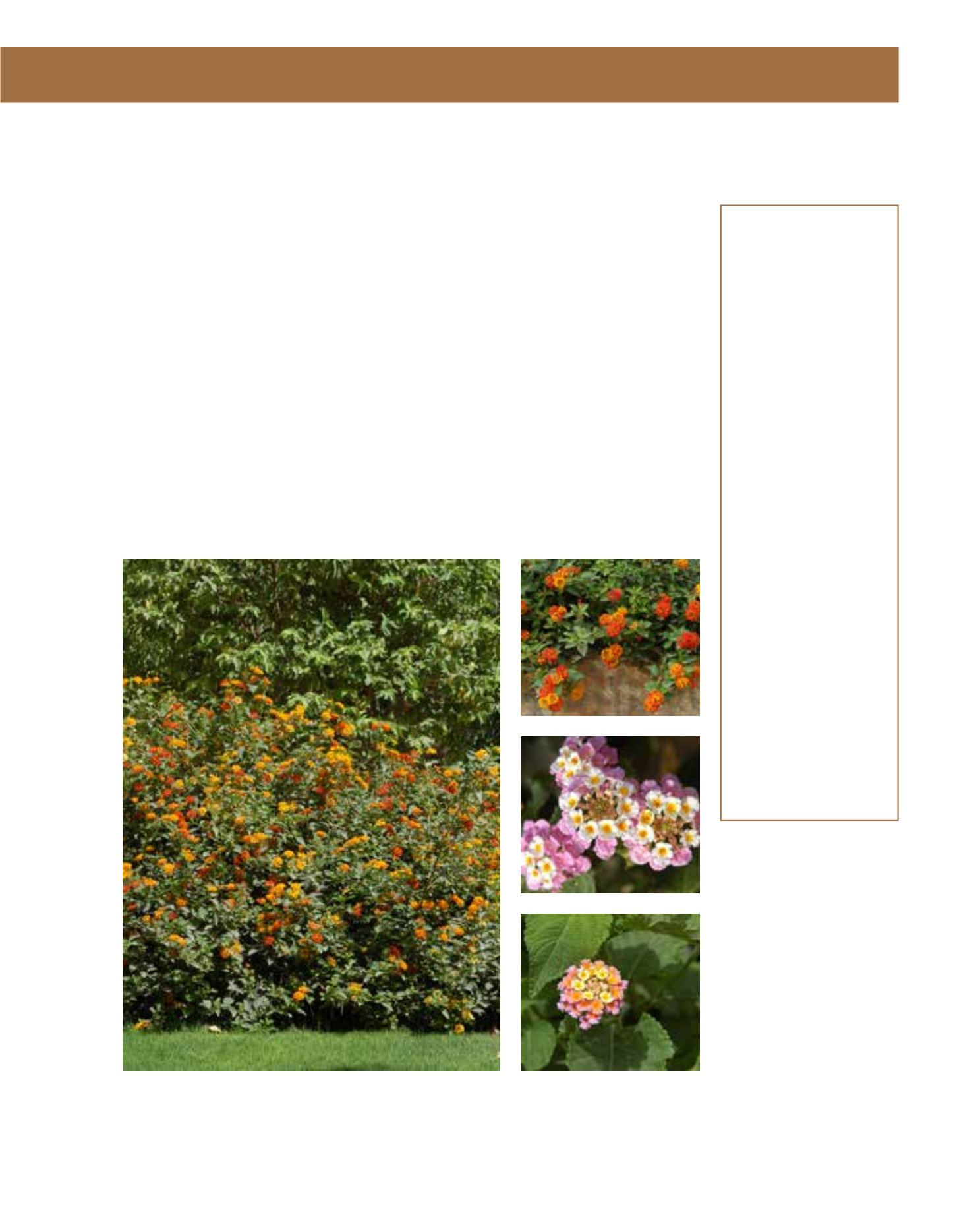

GENERAL
Origin
:
Mediterranean,
sub-tropical,
tropical
Vigour
:
normal growth
rate
Humidity
:
semi-arid, semi-
humid, very
humid, extremely
humid
Propagation :
sowing and
pricking out,
cuttings
Maintenance :
low
CONDITIONS
Urban climate :
resistant
Dessication :
vulnerable
Stagnant water :
vulnerable
Irrigation
:
medium
Salinity/ppm :
moderate (3000
ppm)
Hardiness
:
0°C
SHAPE
Type
:
shrub
Height
:
1 m-1.8 m
Spread
:
1.5 m-2 m
Foliage
:
evergreen
FLOWER
Colour
:
orange, red,
yellow, pink
Size
:
4 cm - 6 cm
Period
:
May - October
Smell
:
malodorous
FRUIT
Type of fruit :
berry
Fruit size
:
0.5 cm
Toxicity
:
poisonous
Lantana is indigenous to Mexico and Central America. It is a medium-sized, evergreen shrub
reaching a height of 150 cm. The thin branches and dark-green, oval leaves are roughly haired.
The inflorescence is composed of numerous, little flowers on many heads, which vary in colour
from pink and yellow to red and orange. The leaves and flowers, which bloom throughout the
year, have a strong fragrance. After flowering, green berries appear, which ripen to black. The
entire plant is poisonous, especially the fruits. Lantanas can withstand very high temperatures
and sun, but grow better with humidity. It is moderately tolerant of salinity and will grow on any
soil type. Different cultivars are available such as L. c. ‘Fabiola’, flowering yellow-red-pink, L. c.
‘Nana’ flowers in yellow-orange-red on the same head and L. c. ‘Radiation’ flowers orange-red. L.
camara is the garden relative of Lantana horrida, which is much more drought-tolerant, but even
less frost-tolerant. Lantanas are best propagated by cuttings. They are versatile shrubs for arid re-
gions forming natural screens, clipped hedges or splashes of colour. It is a popular shrub in urban
areas, public open spaces and park planting. It is useful as low underplanting and in extensive
landscapes; it will almost become naturalised. It is now quite wild in certain areas of the Diplo-
matic Quarter. Relatively low maintenance is required, and a dense, attractive shape is achieved
by regular pruning. Occasional deep watering and feeding will also improve its appearance.
182
Lantana camara,
Verbenaceae
Lantana,
Shrub Verbena
















